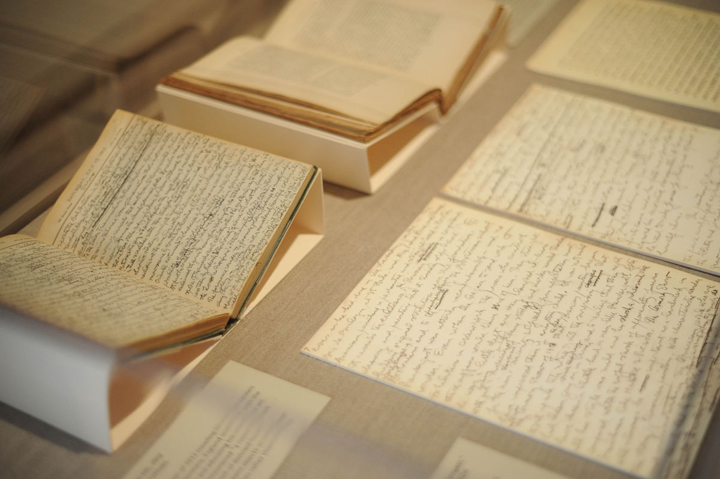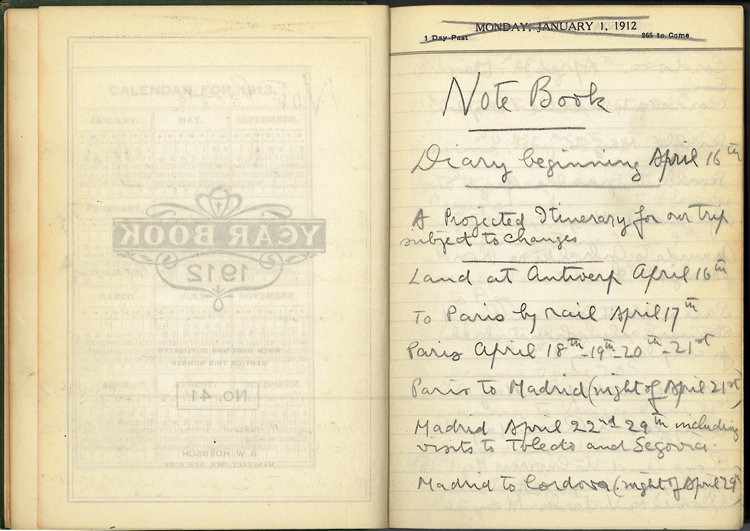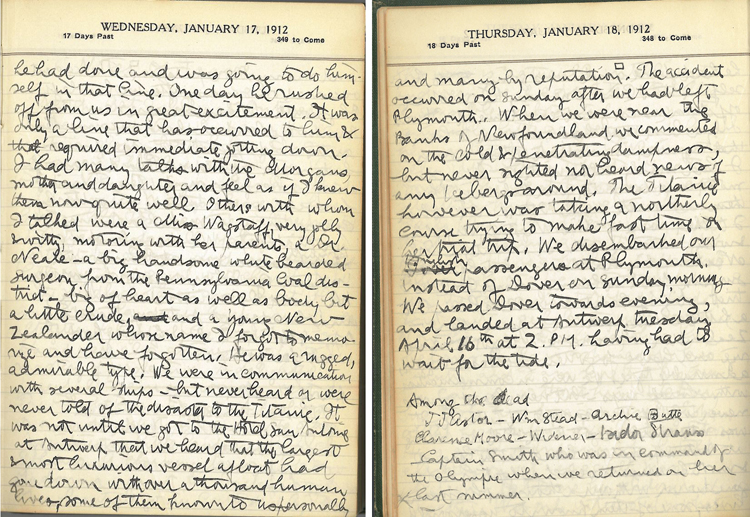
Journals and manuscripts written by Duncan Phillips on display as part of the exhibition, History in the Making: 100 Years After the Armory Show. Photo: Joshua Navarro
“I never travel without my diary. One should always have something sensational to read in the train.” – Gwendolyn, The Importance of Being Earnest by Oscar Wilde
It would appear that Duncan Phillips wasn’t one to travel without his diary either. Although perhaps not quite so scrupulous as Oscar Wilde’s Victorian characters, Phillips enjoyed the habit of journal keeping, from documenting voyages overseas to exacting notes on the price and shipment of a new work of art for his growing collection. More than a century after Duncan Phillips began writing about art, The Phillips Collection has meticulously archived his diaries, daybooks, and drafts for later publications in its library.
But Phillips wrote for more than his own personal satisfaction – it seems evident that his diaries were one place where Phillips grew from an admirer and collector to an esteemed critic of art. He edited his own journals, inserting marginalia and crossing out entire paragraphs or even pages as his ideas changed. Phillips’s publications sometimes developed over the course of several years; for example, his 1924 deluxe edition monograph on artist Arthur B. Davies was the result of thoughts and essays Phillips had written since 1916. The museum’s library and archives still contain each of these drafts, and of course, the final product which is now on display in History in the Making: 100 Years After the Armory Show.
Perhaps most striking in Phillips’s thought is how it changed over time, especially with regard to works of art he saw in the 1913 Armory Show. This exhibition, which was lambasted by the press, was equally troubling to Phillips. But with time the young collector’s opinion changed. His journals and many drafts express this. Writing on the Armory Show in several drafts throughout the 1910s and 20s, Phillips first characterized the exhibition as “notorious,” then as “startling,” and finally as “sensational” in his Collection in the Making (1926). Furthermore, the artists that he had seen in 1913 became more palatable as he trained his eye as a collector. Matisse and Cézanne, whom he once decried as “damned fools,” became highlights of his collection.
As a curatorial intern working on the Armory Show this summer, I had the chance to excavate the archives and help identify this dramatic shift in Phillips’s thinking. I have to say I agree with Gwendolyn, journals make for quite sensational reading.
Anna Rotrosen, Curatorial Intern


